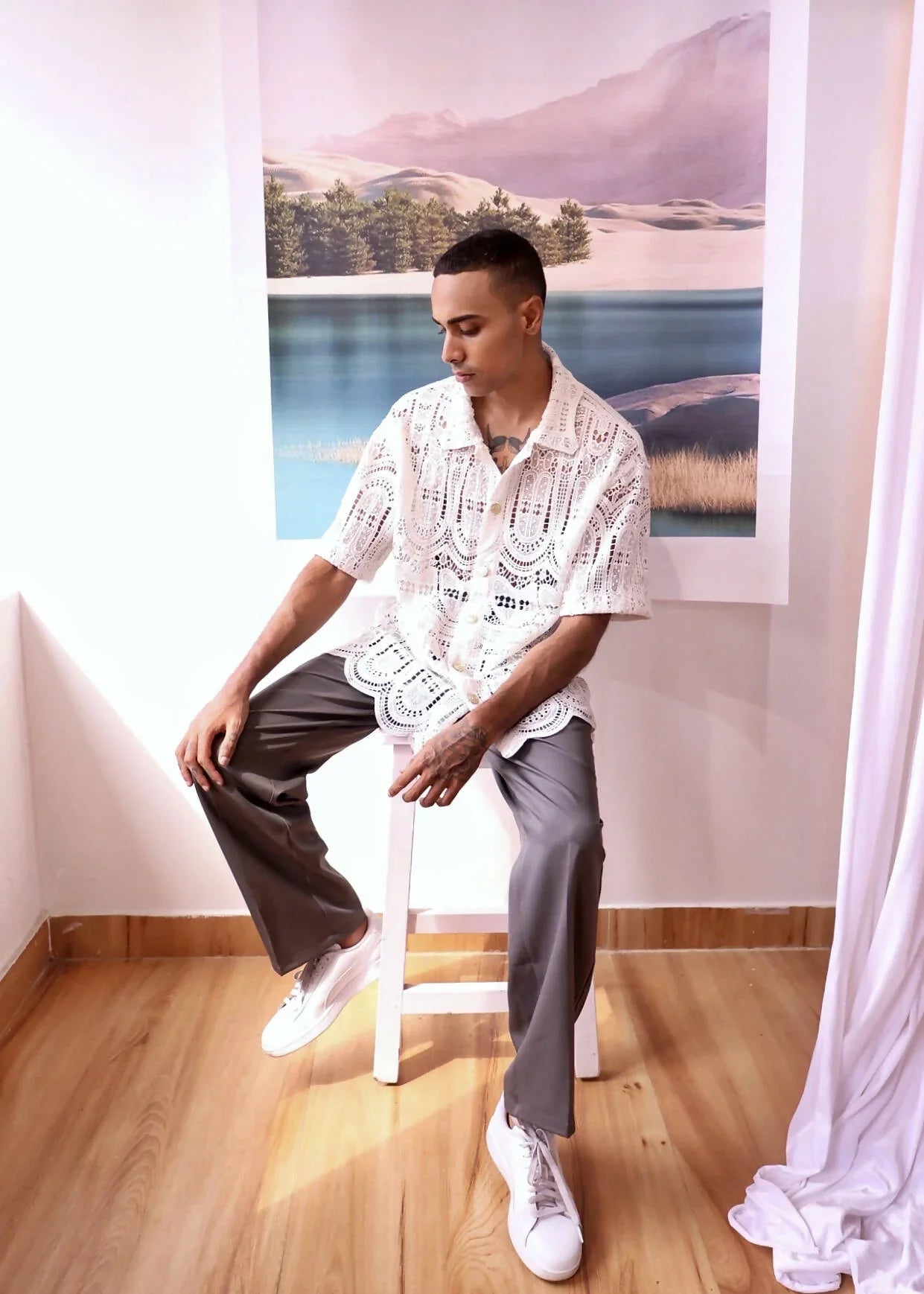Stolen Childhood: The Hidden Victims of Fast Fashion

Beyond the Price Tag - The Human & Environmental Cost of Fast Fashion
Have you ever wondered how cheaply priced clothes are made and by whom? Before we get into it, let’s take a moment to understand the massive scale of the fast fashion industry and how rapidly it’s expanding. The Kings Research report estimates that the global fast fashion market is set to reach USD 167.50 billion by 2030. These aren’t just numbers, this growth means an enormous amount of waste is heading straight for landfills (as if they aren’t already overflowing), natural resources are being misused, and the people making these clothes are paid unlivable wages.
And does it stop there? A big NO.
This means we’re constantly kept in a loop of overproduction and overconsumption - buy, dispose, and buy again. The endless promotions urging us to "follow the trends" and there’s always something new to buy, even if those trends barely last a few weeks.
The True Cost of Cheap Clothing
Our planet’s resources, human labour—specifically child labour—and the poorest quality materials are exploited to mass-produce disposable garments. But for what?
It’s all part of the take-make-dispose model. Fast Fashion clothes are produced cheaply, with low-quality fabrics that wear out quickly, forcing you to replace them again and again. The inhumane and hidden cost is equally disturbing. The United Nations Children's Fund (UNICEF) estimates that more than 100 million children around the world are working as child labourers, many within the garment industry.
The Movement and The Revolution #WhoMadeMyClothes
The dark side of fast fashion needs to be addressed. We are not just speaking about waste, it’s about people, ethics, and fundamental human rights.
In response to the Rana Plaza tragedy in Bangladesh in 2013, Carry Somers and Orsola de Castro founded the #WhoMadeMyClothes movement as part of Fashion Revolution. The goal? To demand transparency, hold brands accountable, and give a voice to the millions of garment workers who remain unseen and unheard.
Lindsay Poulton, Francesca Panetta, Jason Burke, David Levene and the Guardian Interactive team produced an eye-opening documentary in 2014: The Shirt on your back. Watch the clips, read the coverage, and understand the human toll behind fast fashion.
(Image credit - Guardian: The Shirt on Your Back. Click on the image to watch)
A George Washington University news report by Emma Ross estimates that the fast fashion industry employs approximately 75 million factory workers worldwide, yet less than 2% of them earn a living wage.
Progetto Happiness: Exposing the Child Labour Reality
Giuseppe Bertuccio D’Angelo, a content creator and video journalist, documents real-life stories across the world through his channel Project Happiness.
One of their most shocking YouTube documentaries—MADE IN BANGLADESH - Inside the fast fashion factories where children work—shows devastating visuals of children and their families working in sweatshops under inhumane, unlivable conditions.
Child labour is illegal, yet millions of underprivileged children are forced into it. Childhood should never be taken away, yet here we are in 2025, where basic rights are still being denied to millions of kids worldwide.
(Image credit - Progetto Happiness: Made in Bangladesh - Inside the Fast Fashion Factories. Click on the image to watch)
The Story of Jui: A Child’s Dream Taken Away
In the video, we meet 12-year-old Jui, a child labourer in Bangladesh, living in poor conditions and unfortunately working in a factory. When asked what her biggest dream is, she responds, "My dream was to become a doctor. But since I can no longer do that, I work in clothing factories to pay for my sister’s education so she can become a doctor."
To Jui, and every other child...
WE don’t want you to suffer.
WE don’t want your childhood stolen.
WE don't want you working in a factory.
WE definitely do not want you making our clothes, accessories, shoes or any other products with your little hands.
We want education for you - the basic right to study.
We want you to be free from labour.
We want you to experience childhood and freedom.
We want you to grow in a safe environment.
No child should ever have to choose between survival and their dreams.
What the 22-Minute Video Features: Facts, Child Labour, and Worker Conditions
Right from the beginning of the video, you’ll understand why it’s important to ask: Who Made My Clothes?
- The harsh reality of child labour—where children, who should be in school, are instead working in factories, deprived of their basic rights.
- The harmful working conditions of the workers.
- The mass consumerism and fast fashion industry’s cheap clothing model, built on exploitation.
- A look inside one of the largest slums in Bangladesh, where garment workers live.
- Exposure of dangerous, inhumane, and depressing tanneries, where leather is processed in toxic environments.
- 21st-century modern-day slavery and the unbelievably low wages.
- Polluted, toxic rivers, poisoned by the fast fashion industry, leading to severe diseases.
- Heartbreaking clips of children seen working—their dreams shattered by labour.
- A glimpse into the humanitarian efforts of ‘Action Aid’, an organization working to support these exploited communities.
Please read the image below, which directly quotes the price and the real sufferings endured by someone else behind that low price tag.

(Image Content Credit - Progetto Happiness)
So—Who Made My Clothes?
It is a deep question, carrying the weight of many lives behind it. If only brands took more responsibility. If only there had been real action after the Rana Plaza tragedy. Yes, it did bring awareness—many people started realizing the cost of fast fashion. A lot, yes, but not enough. And yet, here we are again, witnessing children forced to work in such poor conditions. So, who made my clothes? A question that needs to be asked—by us, by you, by everyone—to brands, and also to ourselves before deciding to purchase that low-priced garment from an unethically produced brand.
Greenwashing is not transparency. We need brands to be honest about their supply chains, labour conditions, and environmental impact.
Find Local – Choosing local gives you an advantage in knowing where your clothes come from and who made them.
Choose sustainable and ethically produced, slow-made, or upcycled fashion.
Use apps like Good On You to check if your clothes were ethically made.
Make use of social media to ask and voice your concerns with #WhoMadeMyClothes?
News Reports & Articles on Fast Fashion’s Impact
EU Parliament – A detailed article on 'The Impact of Textile Production and Waste on the Environment.'
UCLA – The Fast Fashion Epidemic by Elaina Simonsen.
The Earth Org – The Environmental Impact of Fast Fashion by Rashmila Maiti. An article about the dark side of fast fashion, its environmental and social impact, and sustainable alternatives like slow fashion.
CNN Style Interactive (2020) – Fashion in Numbers. An interactive edition showcasing the statistics behind fashion’s environmental footprint and its effects on garment workers.
BBC News – Fast Fashion: How Clothes Are Linked to Climate Change by Esme Stallard (July 9, 2022)
Clean Clothes Campaign – Poverty Wages and the Fight for Garment Workers' Rights. They address the poor pay in the fashion industry and how the UN recognizes a living wage as a fundamental human right.
Be a Part of the Conversation & Take Action
Talk to us! Share your thoughts, tag us @refash_ and discuss what needs to change and what we can do to break the unsustainable cycle.
Tell us: What fact about fast fashion shocked or disturbed you the most?
If you’ve already made the choice, please share your story with us to create a dialogue and inspire others who want to start their sustainable journey.
Our platform is here for you, and for us to discuss and make sustainable changes collectively, creating a chain of impact through our voice and actions.
---
Feature Image Credits: Progetto/Project Happiness








Leave a comment